![]() Download the PDF (2 MB)
Download the PDF (2 MB)
including table: Catalogue Of Animal Figurines
Read on Texas Scholar Works
By Denise Schmandt-Besserat
Abstract: The excavations at ‘Ain Ghazal generated an assemblage of 151 animal figurines, most of which depict horned animals such as bulls, goats, rams, and gazelles. The artifacts were cursorily made of coarse clay in a style that combined stylized withers and legs with highly naturalistic horns. The disposal of some figurines under house floors or in domestic hearths and their repetitious style suggest that the objects were not simply whimsical representations, but that they instead had a specific function. This chapter reviews how later Mesopotamian magical texts may provide an insight into the ritual use of these prehistoric figurines.
Key Words: figurines, cattle, horned animals, animal symbolism, magic.
Animal figurines are a familiar find in Near Eastern sites from the 9th to the 3rd millennium BC from the Levant to Iran. Their function, however, is still enigmatic. This paper presents the animal figurine assemblage from ‘Ain Ghazal: the species represented, the style, the manufacture, the context in which they were recovered, their place in the iconography, and finally, the role animal symbolism may have played in ancient Near Eastern thought.
The ‘Ain Ghazal Zoomorphic Assemblage
There are 151 zoomorphic figurines in the ‘Ain Ghazal assemblage (Rollefson 2008: 398-400; 1983: 35; McAdam 1997: 131-135). The most remarkable feature of the collection is its homogeneity. During the 2000 years of occupation at the site, the same animals were made again and again in the same style, using the same coarse material. Bulls with prominent withers are most frequent (Pls. 3.1.1a-f, Fig. 3.1.1). Other species include goats, rams, and gazelles, which are easy to distinguish by their horns (Figs. 3.1.2a-c). One long snouted boar (Figs. 3.1.3a and b) and two large-tailed creatures, possibly lizards, are unique in the collection (Figs. 3.1.4a and b) (Rollefson, Simmons, et al. 1985: 86-88).
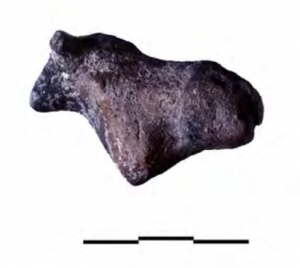
The style is also remarkably uniform. The quadrupeds are invariably represented standing still, the legs parallel. Activities such as grazing, resting, sleeping, walking, running, or rearing are not portrayed. The figurines usually measure about 7 cm, and are occasionally as large as 15 cm or as small as 3 cm (Fig. 3.1.5). The stylistic treatment is consistent. Particular sets of features are either emphasized, reduced, or altogether ignored. For example, eyes, nostrils, and mouths are systematically excluded, and the skin or coat is not depicted. The sex organs are always omitted. On the other hand, the animal’s foreparts are exaggerated. The heads, large sweeping horns, powerful necks, withers, and shoulders bulge in front, contrasting with the small, tapering rear ends (Pl.3.1.1a, Fig. 3.1.1). The dorsal spine pinched along the back sometimes extends into a curious crest (Pl. 3.1.2a).
The horns reflect a great concern for verisimilitude (Fig. 3.1.6a and b). They are faithfully portrayed with the characteristic cross section, length, and curvature of a specific species. Bovine horns are represented as stocky and curving frontward; those of wild goats are accurately indicated by a marked anterior spine and sharp curvature. Ram horns are semicircular, while those of gazelles elegantly sweep backwards. In contrast, the tails defy nature: bovines are portrayed with a short appendage when, in fact, they are endowed with a long one; goats have a hanging tail, which should be upturned (Fig. 3.1.2b). The most stylized feature, however, are the legs. Reduced to minute pointed stumps, they lack any indication of thigh, knee, ankle, forelock, or hoof (Fig. 3.1.7). Moreover, the limbs barely project below the belly and are grossly disproportionate to the rest of the body. Finally, it is noteworthy that, although the little creatures are often totally asymmetrical, one side being far thicker than the other, they stand firm on their tiny legs. This suggests that, whatever the function of the figurines might be, they were meant to stand up.
The figurines were mostly modeled in an unprepared, coarse yellow-brown clay with large gravel and pebble inclusions, which is available locally. They were manufactured by cursorily modeling a clay coil into a neck and a head, pressing the other end against a hard surface to shape a flat rump, pinching legs and tail, and finally attaching the horns which were made separately. Some figurines exhibit puzzling features. The most enigmatic are two animals, each stabbed with three flint bladelets in the throat, abdomen, the chest, or the eye (Figs. 3.1.8-10) (Rollefson and Simmons 1986: 150). Others display pieces of flint or pebbles, in some cases oddly placed under the tail (Pl. 3.1.2c). A single figurine bore a set of four parallel, incised lines along the side (Fig. 3.1.12a-b). Lastly, two animals were intentionally truncated when the clay was still moist. Despite their modification, the animals were still able to stand. In one case, the neck of an animal severed behind the forelegs was extended to form a peculiar but steady tripod (Figs. 3.1.13a and b) (Rollefson and Simmons 1985: 43).
The figurines do not exhibit grey cores or any other evidence of intentional baking. However, black or red marks and bits of charcoal on the surface indicate that the animals were exposed to fire, possibly in an open hearth or brazier, which would generate a partly oxidizing and partly reducing atmosphere (Figs. 3.1.2a right, and 3.1.12a). The fact that the figurines are often mixed with ashes in trash deposits suggests that they may have been disposed of in a fireplace. This would also explain why the surface of the figurines often shows cracks and the animals are usually badly damaged. None of the figurines is complete. Heads, legs, tail, rump and, especially, horns are mostly broken off, with many examples reduced to the fore- or back parts.
Two sets of figurines were recovered in situ. The two stabbed animals mentioned above lay side by side in a tiny pit covered by a limestone slab beneath a floor in the corner of a room (Fig. 3.1.11) (Rollefson and Simmons 1986: 150, 152-153). Although the building appears to have had a domestic function, in previous phases it had also held unusual burials: five funerary pits arranged around a hearth, an infant under a doorway, a cache of three adult skulls, and a child’s skull treated with black pigment (Rollefson and Simmons 1986: 155). In the second case, a clay bull was recovered in a house, in a storage bin where it was associated with three Bos bones (Fig. 3.1.14), one of them bearing an incised pattern (Rollefson and Simmons 1986: 152-153).
Twenty-four clay animals recovered as a hoard in the fill (Pl. 3.1.2), together with a lump of coarse yellow clay bearing five curved incised markings (made by fingernails?; Fig. 3.1.16), also deserve special attention (Rollefson and Simmons 1984: 21). Twenty-three of the figurines were made by someone who had a knack for pinching the coarse yellow clay into elegant little bulls (Pl. 3.1.2), whereas the twenty-fourth figurine, of a nondescript species, was awkwardly made of a different finer and whiter clay or perhaps plaster (Fig. 3.1.15). The cache therefore suggests that twenty-three figurines were modeled more or less at the same time by the same expert hand and discarded shortly thereafter with the remaining unused clay. The white figurine suggests a second, less experienced individual also at work.
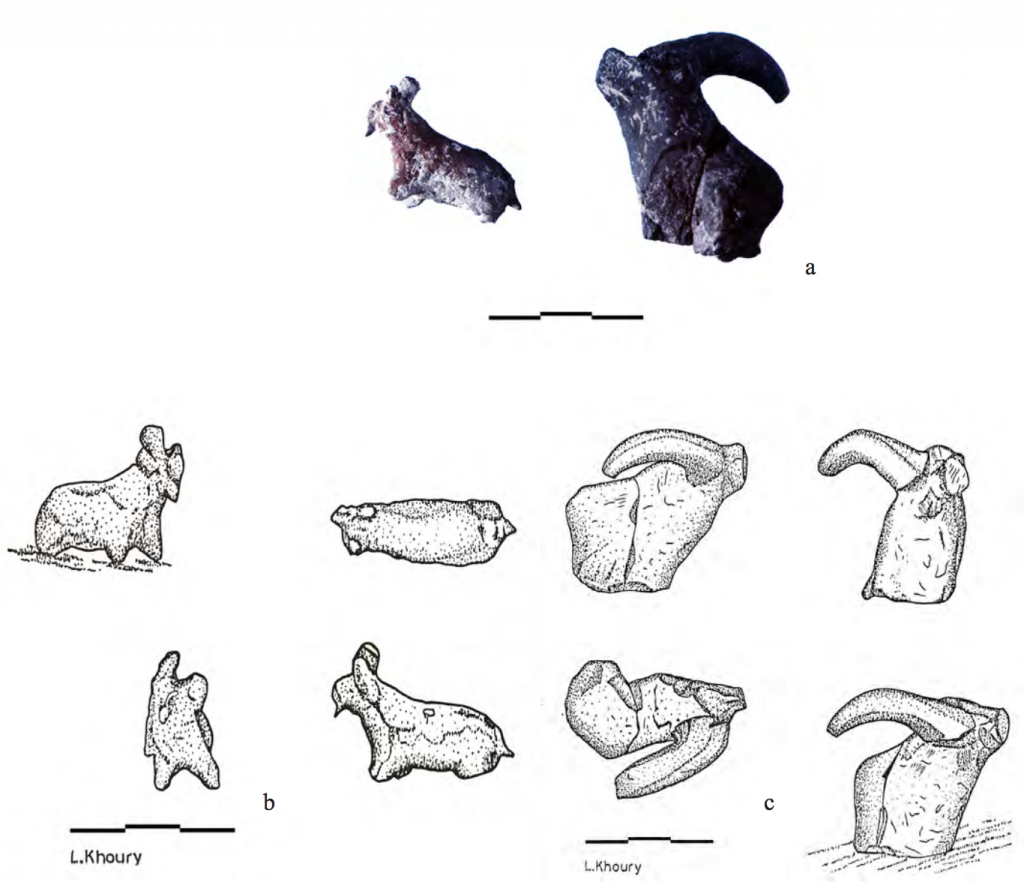
In sum, ‘Ain Ghazal brings significant evidence on the manufacture, manipulation, and disposal of Neolithic zoomorphic figurines. The animals were modeled with coarse, unprepared, locally available material, at least on occasion by an experienced hand probably denoting a specialist, in groups as large as twenty-three. Their manufacture sometimes involved stabbing the animals in vital parts with flint bladeletes or severing the bodies while the clay was moist. The figurines did not randomly portray the local fauna but selectively represented, over and over again, bulls and long-horned goats, rams, and gazelles. These animals were always shown in the same position, standing firmly on short, stumpy legs. The style of modeling consistently emphasized the foreparts, conveying force, vitality, and dynamism. The repetitious character of the figurines suggests that they were not whimsical representations, but reproduced a formal prototype. Finally, after their function was fulfilled, the figurines were disposed of either by burying them under the floor of a house, placing them with other “art” pieces in a storage bin, or burning them in a hearth, after which they were discarded together with the fire’s ashes in the general household trash.
The Iconographic Context
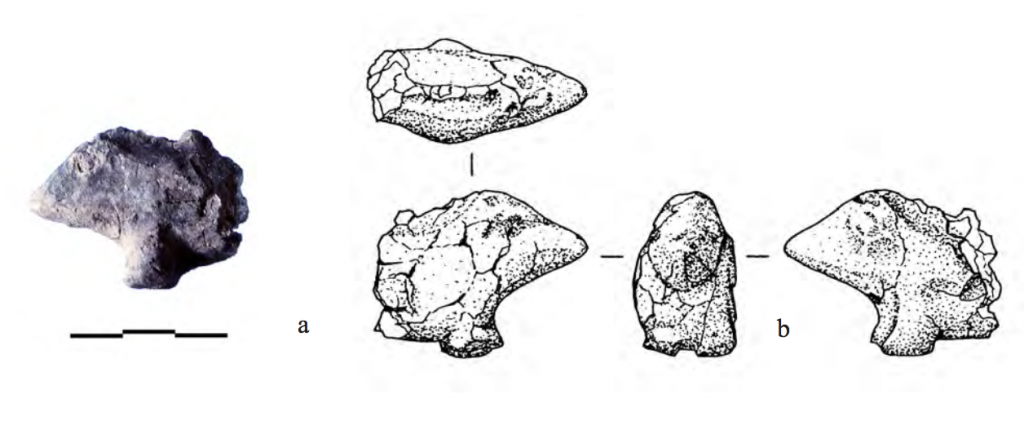
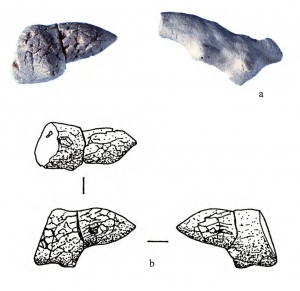
Zobi; b) Lizard. Cat No. 83. L. 3.0, H. 1.7, W. 1.4. Drawing by L.S.
el-Khoury.
Cattle and long-horned animals were also celebrated in early Neolithic assemblages at other sites in Jordan or Syria (Fig. 3.1.17) (Stordeur 2010: 124). Basta, Tell Aswad, and Ghoraifé are among the contemporaneous Levantine sites at which were found comparable numbers of zoomorphic figurines featuring the same types of animals made in the same way in the same size, material, and style (Rollefson 2008a; Contenson 1995: 181- 182, 321). As at ‘Ain Ghazal, bulls with massive withers and long-horned caprovids and gazelle dominate, with an occasional boar (Contenson 1995: 187, Fig. 125: 1). The figurines were cursorily manufactured, had oversized horns, stood steady on their dwarfed legs, bore superficial soot or reddish marks on the surface, and were repeatedly found in ancient dumps (Contenson 1995: 20). Animal figurines continue to be a familiar feature in the late Neolithic, Chalcolithic, and Early Bronze Age sites in the Levant, e.g., Tell Sabi-Abyad (Akkermans and Verhoeven 1995: 25-26, Fig. 15: 14), as well as in Mesopotamia and Iran, e.g., Uruk (Lenzen 1965: 25, Figs. 14c, d, f) and Hissar (Schmidt 1937: 54, Pl. XIV). They are still common in the 3rd millennium BC, as at Tell Chuera, Syria, where bovids and caprovids were produced (Moortgat 1962: 18, Fig. 12f) along with a more diversified figurine assemblage including horses, pigs, and birds (Moortgat 1975: 54, Fig. 26b; Hauser 2007; 1997: 87). In fact, the manufacture of clay animal figurines persisted throughout the Iron Age. They were still being created in the Assyro-Babylonian period with the only difference being that some beasts had become hybrids (Curtis 1995: 115, no. 70-72).
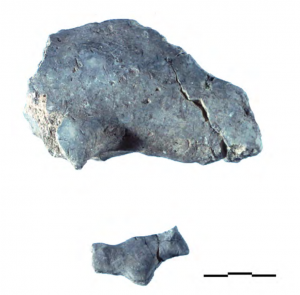
Neolithic clay figurines were not the first art form glorifying bovines and long horned animals. From the first attempt at image making in the Near East, bulls, caprovids, and cervids dominated the repertory of art motifs. The entrance of Beldibi Cave featured an engraved auroch and a deer showing that these animals already played a special role in the Paleolithic hunters’ world of 15,000 BC (Bostanci 1959: 140, Pl. 11). Aurochs and gazelles decorated Mesolithic tools of Kebara, El Wad and Oumm ez Zoueitina, ca. 13,000 BC (Valla 1975: Pl. 1 and II, 1, 2). Bulls and deer were the subjects of mural paintings and reliefs at Çatal Hüyük, 6500 to 5500 BC (Mellaart 1967: 122-124, 171-173).
Theriomorphic art did not vanish with the advent of writing, but rather multiplied (Hauser 2007). Domesticated bulls and rams appeared in various media, no doubt fulfilling new symbolic needs. They were represented in monumental sculptures in the temple of Inanna at Uruk, ca. 3100 BC, depicted in clay, metal, and fine stones (Spycket 1981: 39-43; Jordan 1931: 37-39, figs. 25, 29, 30). They became two of the most persistent glyptics motifs from the fourth to the 1st millennium BC. Bulls and stags, rams, goats, or gazelles were interchangeably associated with the sacred tree, the master of animals, or the lion (Collon 1987: 187-190). The same is true in sculpture; at Ubaid, for instance, the temple of Ninhursag (ca. 2500 BC) was decorated with monumental metal bulls and two stags mastered by the lion-headed eagle, Imdugud (Hall and Woolley 1927: 22, 28, Pl. V and VI; Watanabe 2002: 117). The predilection for bulls and long-horned animals continued through the AssyroBabylonian as well as the Persian period. The bull still adorned the processional way of Babylon in 600 BC.
In this perspective, the ‘Ain Ghazal bull and horned animal figurines are not an isolated phenomenon. Instead, they are part of an age-old Near Eastern tradition of theriomorphic art. From the Paleolithic to the Assyro-Babylonian period, bulls and long-horned animals pervaded all forms of art, including wall engravings, glyptics, monumental reliefs, and sculptures of metal and fine stones. The frequency and endurance of these motifs speak to a symbolic tradition in which these animals encapsulate some of the most profound ancient Near Eastern thoughts (Cauvin 1994: 97). The meaning of the Beldibi, Çatal Hüyük, and ‘Ain Ghazal animal symbols is, of course, forever lost. Nor can archaeology recover the significance of the Uruk theriomorphic sculptures that have no definite context. Therefore, we will never know whether the symbolism enjoyed continuity or suffered disjunction over time. All we know is that in the 3rd millennium BC, the prominent location of monumental bulls and horned animals at the entrance of the al Ubaid temple makes it clear that they had a religious connotation.
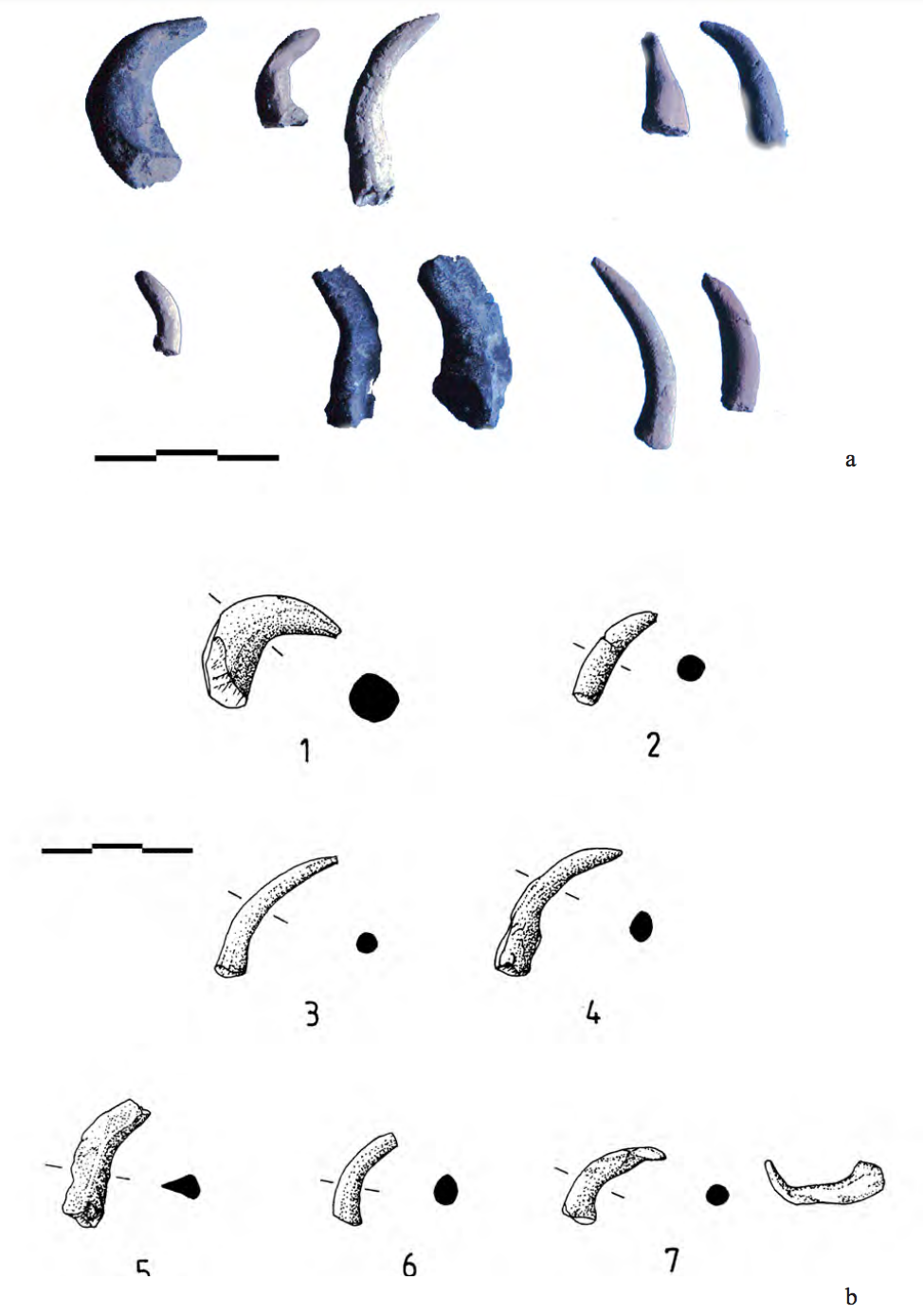
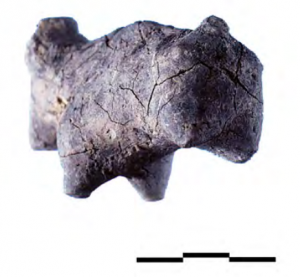
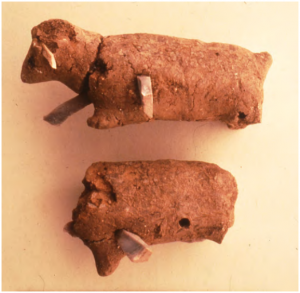
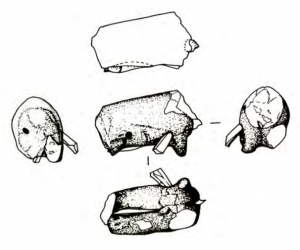
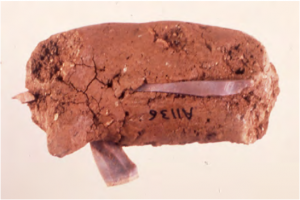
Animal Symbolism In The Ancient Near East: The Textual Evidence
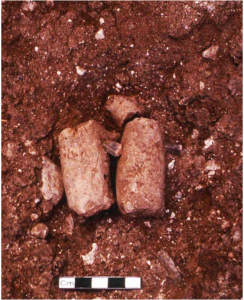
The functions of human clay figurines have been cogently discussed by many, but the animal specimens have not enjoyed the same attention (Wengrow 2003; Akkermans and Schwartz 2003: 87). Edward Ochsenschlager (1974) is among the few who put in writing the view, held by many, that the objects were children’s toys. More recently, Postgate (1994) has convincingly argued that the key to the prehistoric clay animal figures may ultimately be provided by examples of the later periods, when texts complement the archaeological evidence. He and Moorey (2005: 6-7) advocated the legitimacy of using, with due caution, historical cuneiform texts to gain insights into timeless Near Eastern traditions. Furthermore, recent scholarship has made archaeologists more aware of the close ties that existed between the Mesopotamian cultural developments and those of the Levant (Snell 2007: 113). The resulting new path of investigation now opened is challenging.
Bulls, rams, and stags are frequently cited in cuneiform texts of the 3rd to 1st millennium as symbols of various concepts and personifications:
- Zodiacal constellations: The animals were identified with Taurus and Aries (Black and Green 1992: 47), or the sun (Wiggerman 1992: 174-175).
- Gods: The bull was An, the sky deity, highest in the pantheon. It was also the attribute of Adad, the storm god, (Watanabe 2002: 97) as well as Nanna, the moon god (Veldhuis 1991: 1; Stol 2000: 66). The goat was Enki, god of water (Black and Green 1992: 47).
- Virility: the bull and the stag were invoked in the Shà.zi.ga incantations to restore sexual potency (Biggs 1967: 22-24).
- For relief in childbirth incantations: The Cow of Sin (Veldhuis 1991: 58)
- The cuneiform texts also stress the great importance of live animals for cultic sacrifice (Leichty 1993)
I will not dwell on the Bronze Age significance of the animals, since archaeology cannot establish the origin or antiquity of these symbols. It suffices to underline that, as soon as written evidence becomes available, the texts disclose the cosmic significance of bulls and horned animals.
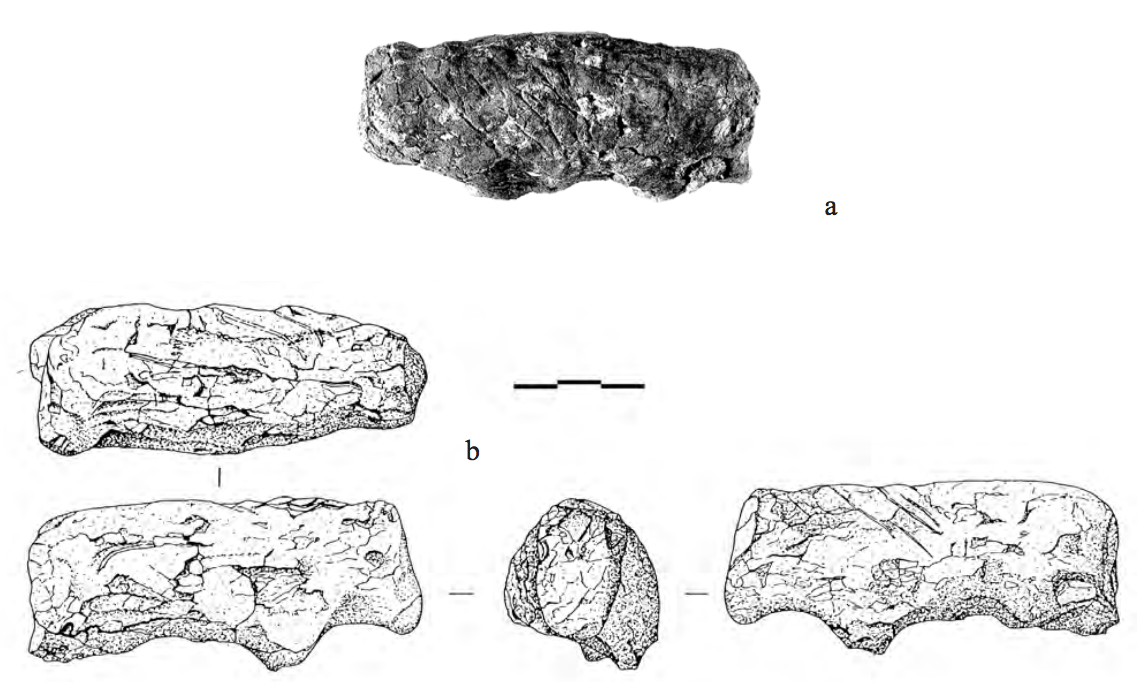
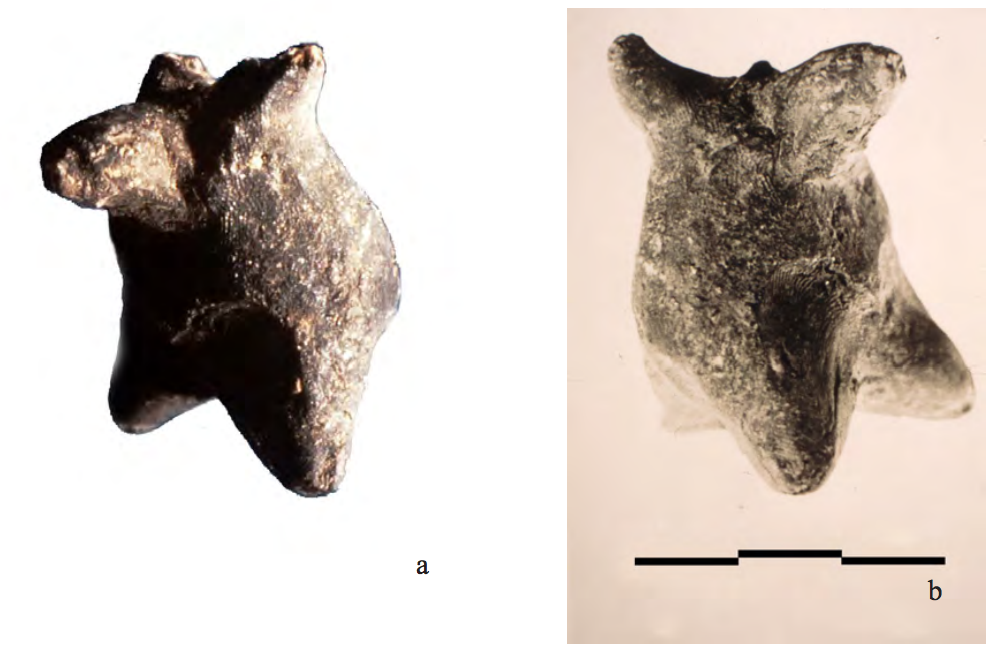
Hussein Debajah; b) Back of truncated animal formed into a tripod in order to stand up. Cat. No.27. Photograph by Y. Zobi.
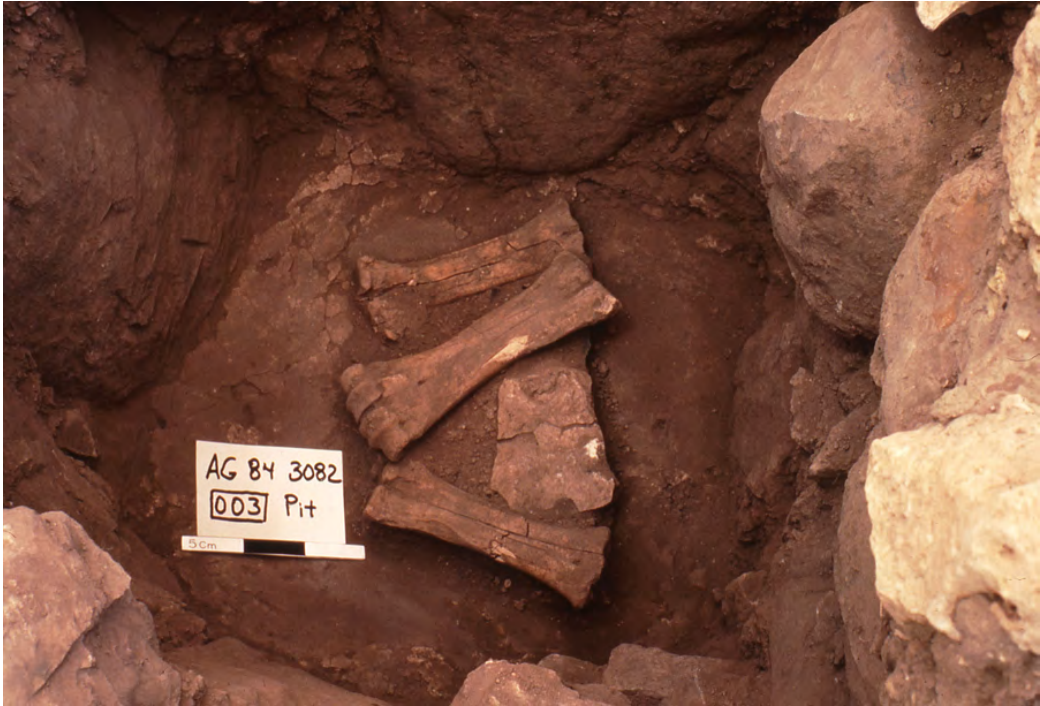
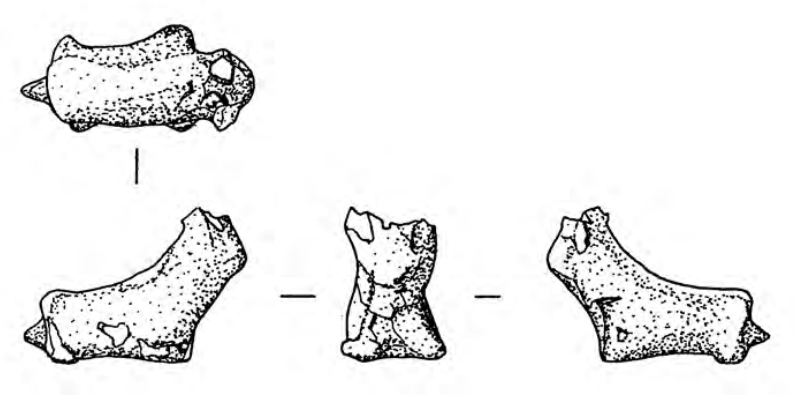
Drawing by L.S. el-Khoury.
Abundant archaeological data confirm the allusions in the cuneiform texts to the cultic use of clay animal figurines: 1) as ex-votos, 2) as apotropaic foundation deposits, 3) in magic rituals. For instance, clay dogs excavated in shrines of Gula bearing dedicatory inscriptions such as “For the lady Gula, I made a clay dog and presented it to her,” demonstrate that the goddess of healing received as ex-votos figurines of her sacred animal (Postgate 1994: 176-177). Also, instruction texts prescribing the ritual burying of animal figurines to protect buildings against evil are corroborated at several sites, in particular at Nimrud (Green 1983) and in earlier levels of Ur, where snakes, dogs and composite creatures were recovered along house and palace walls (Woolley 1926: 691).
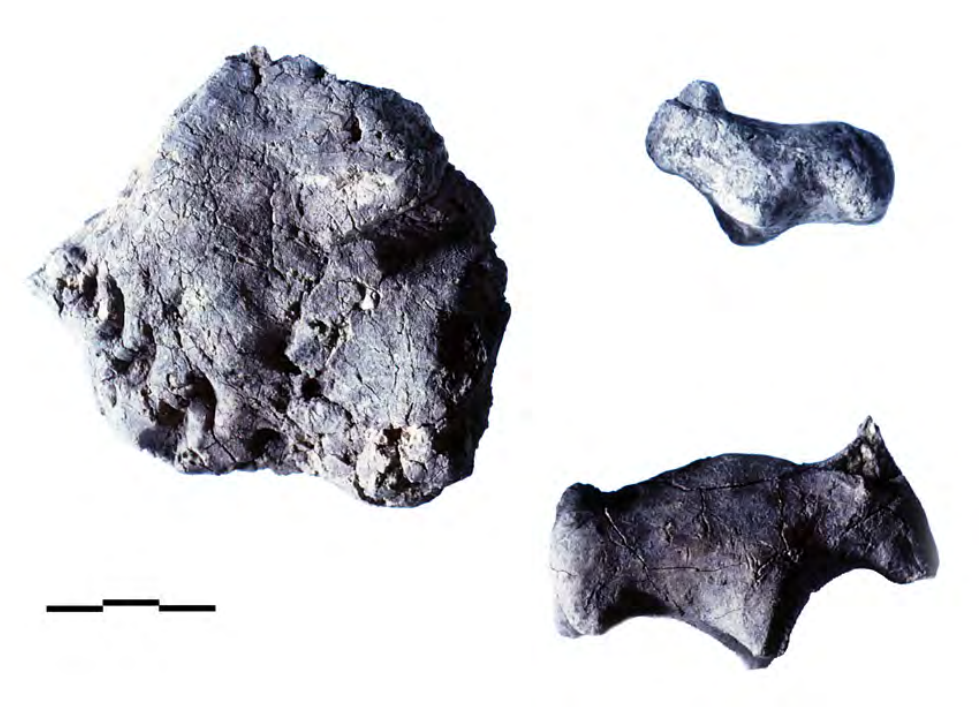
Incantation texts, also attest to the fact that figurines were created in the course of magic rites. One such text, from the 7th century BC Assyrian Namburbi series, refers to an ox figurine fashioned in a ritual intended to bring brisk trade to an innkeeper (Caplice 1974: 23-24). The ceremony involved building an altar to Ishtar, offering bread, and creating an ox figurine. The latter was done according to a set of specific procedures as follows. First, the participant collected dirt at various places, including a quay, a crossing, a bridge, the intersection of four roads, the city gate, and at the doors of the Ishtar temple, a prostitute’s, and a busy tavern; next, he mixed the dirt of these various locations with water. He then spread some of the mixture at the threshold of the inn. Next, he modeled an ox with the remainder of the paste. Then, he uttered a spell seven times, prostrated himself, and finally, buried the figurine under a vat. A second text of the Namburbi series prescribes making clay figurines to counteract the bad omen of a lizard (Caplice 1974: 19). This ritual involved first sweeping the house roof, sprinkling water, building an altar, and preparing (animal?) offerings. Next, a lizard was modeled in clay and placed on the altar on a specified design drawn in a bowl. Then the patient pronounced a given number of spells while standing on tamarisk wood and holding the hand of the priest.
These incantation texts are invaluable in giving specific information on the making of the clay animals used in the rites, their manipulation, and disposal. It is evident that, in the ritual contexts described, the quality of the clay was of no concern but the location where the dirt was collected was important, and that the value of the objects derived from the simple act of creating them rather than from careful craftsmanship. These texts likewise present a scenario in which the manufacture involved as many as three actors: the patient, a priest, and sometimes his attendant (Reiner 1958: 4). The figurines were made in prescribed numbers, varying from a single object to large groups; the manipulation of the objects was limited to a brief presentation on an altar; and their disposal was immediate and consisted of burying them at a given location, throwing them in the river, or burning them (Abush 1990: 12).
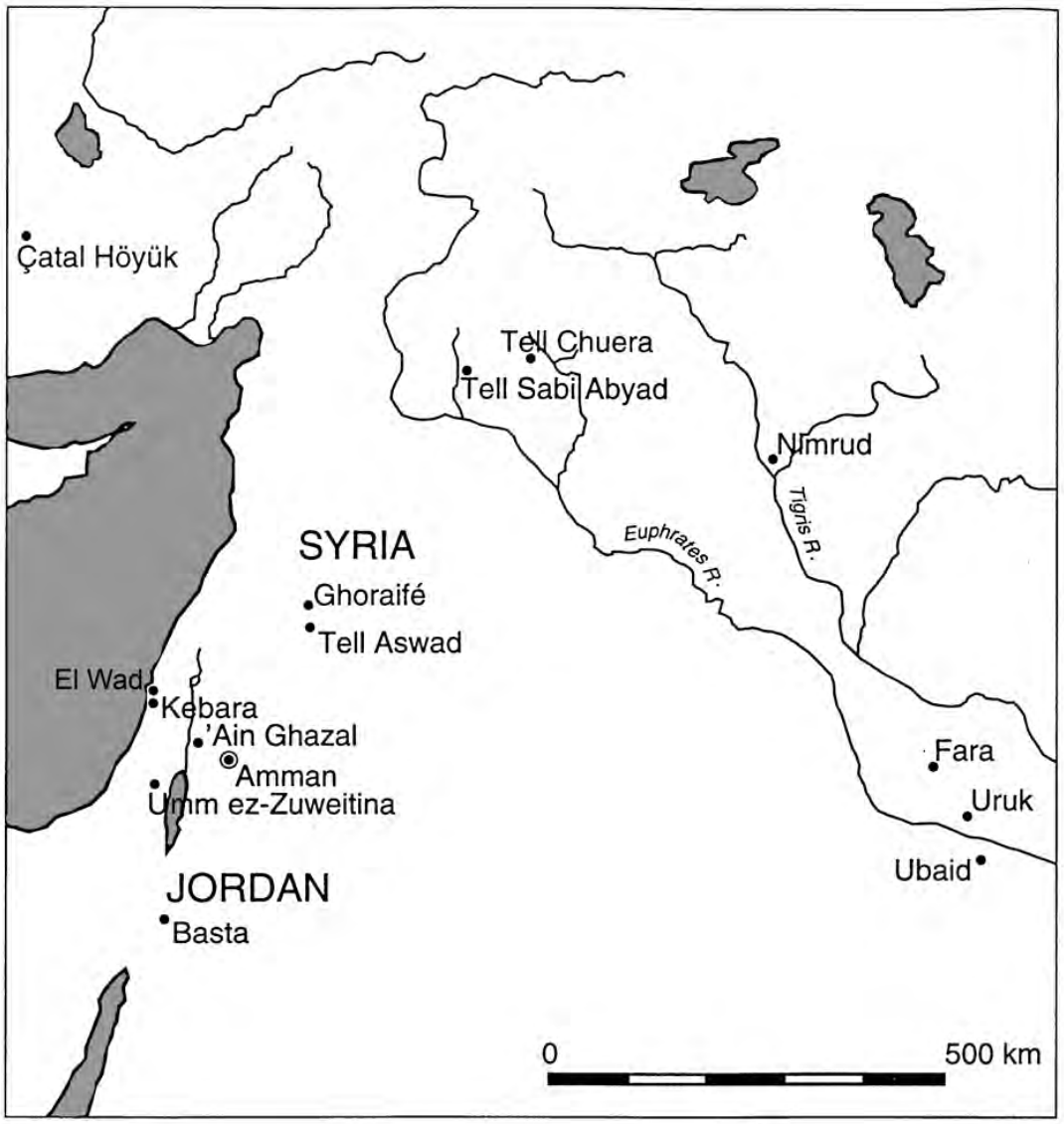
The Possible Functions Of The ‘Ain Ghazal Figurines
To turn back through the millennia to the ‘Ain Ghazal material, what might have been the function of those animal figurines? Simple logic suggests that the pair of animals, each stabbed three times in vital parts and buried in a specially prepared cavity in a corner of a room, cannot be explained as toys. The figurines are also unlikely to represent surrogates for offerings, since we know that in later periods the main purpose of sacrificing animals was deriving omens from the behavior of the live beast as it was led to slaughter, extracting its entrails for divination, or collecting its blood for purification (Leichty 1993: 239-242). Could the Neolithic zoomorphic figurines be related to magic as described in the cuneiform texts? The evidence at hand certainly warrants the question (Postgate 1994: 176-184).
Late texts unquestionably reveal that, in the 1st and 2nd millennium BC, magic pervaded everyday life and religion and that animals, endowed with a cosmic significance, played a role in the rites. Why, as proposed by Postgate, is it legitimate to apply knowledge derived from the late historical period to the Neolithic period? Because it is attested by the Fara incantation texts that magic was already practiced in the early 3rd millennium BC (Krebernik 1984). And there is no reason to doubt that the same was true before literacy. In fact, it is commonly assumed that the Fara texts transcribed a long-lived oral tradition that had its roots in prehistory (van Dijk et al. 1985: 1). This assumption is plausible, first, because magic is universal (Ellen 1993: 8, Brown 1997: 122), and second, because to the extent that the effectiveness of spells is thought to depend on the precision of their execution (Connerton 1989: 57-58), magic practices have little potential for modification, change, and reinterpretation and thus tend to be slower to change than most other aspects of culture (Kertzer 1988: 12).
The idea that the Neolithic zoomorphic figurines could be related to magic is supported by the ‘Ain Ghazal assemblage (Rollefson and Simmons 1986: 150), and in particular by various characteristics of the collection:
- the selection of bulls and long-horned animals, traditionally associated with cosmic significance;
- the use of unprepared clay;
- the cursory modeling suggesting that the objects had no intrinsic value, but that their importance derived from the simple act of manufacturing them;
- the force and vitality communicated by systematically exaggerating the foreparts;
- the stabbing, slashing or cutting of particular figurines;
- their ability to stand up on a designated place, such as an altar;
- the clusters of one, two, and twenty-four figurines;
- the likelihood that in some cases they were manufactured by an experienced individual, maybe a “priest, ” or “shaman” with the participation of a less able hand, perhaps an attendant or the patient for whom the ritual was performed;
- the association with other “art” objects, such as incised bone; and especially,
- the conscious disposal of the clay animals by burying them under a house floor or in the vicinity of unusually treated human remains; by placement in a food storage area, or in the fire.
If, indeed, some of the Neolithic figurines of ‘Ain Ghazal played a ritual role, the objects can no longer be dismissed as trivial. The clay animals were metaphors of the forces of nature that fostered consciousness of the place of humans in the universe. By expressing the numinous, they facilitated the elaboration of a cosmology that bonded individuals of the same culture (Braun 1990: 71-72). Moreover, magic enhanced important cooperative social acts as it brought people together in the pursuit of common goals. Finally, the ceremonies in which the figurines were created could have promoted the rise of leadership by showcasing an officiating figure deemed to steer cosmic powers. In fact, the Neolithic magic ceremonies that involved animal symbols to express cosmic powers presaged fundamental characteristics of the Mesopotamian temple, the first Near Eastern public institution.
Acknowledgments:
An earlier version of the paper was published in 1997 in Expedition 39.1: 48-58. The study was funded by a Fellowship from the American Center of Oriental Research, Amman, Jordan (ACOR) and the USIA and by the James R. Dougherty, Jr. Foundation.
Bibliography
Abush T.
1990 An early form of the witchcraft ritual Maqlu and the origin of a Babylonian magical ceremony. In T. Abush, J. Huehnergard, and P. Steinkeller (eds.), Lingering over Words: Studies in Ancient Near Eastern Literature in Honor of William L. Moran: 1-57. Atlanta: Scholars Press.
Akkermans P.M.M.G. and Schwarz G.
2003 The Archaeology of Syria: From Complex Hunter-Gatherers to Early Urban Societies (ca. 16,000- 300 BC). Cambridge: Cambridge University Press.
Akkermans P.M.M.G. and Verhoeven M.
1995 An image of complexity: the burnt village at late Neolithic Sabi Abyad, Syria. American Journal of Archaeology 99: 5-32.
Biggs R.
1967 SHA.ZI.GA Potency Incantations. Texts from Cuneiform Sources 2. Locust Valley, New York: J.J. Augustin.
Black J. and Green A.
1992 Gods, Demons and Symbols of Ancient Mesopotamia. Austin: University of Texas Press.
Bostancï E.Y.
1959 Researches on the Mediterranean coast of Anatolia, a new Paleolithic site at Beldibi near Antalya. Anatolia 4: 129-177.
Braun D.P.
1990 Selection and evolution in nonhierarchical organization. In S. Upham (ed.), The Evolution of Political Systems: 62-86. Cambridge: Cambridge University Press.
Brown M.F.
1997 Thinking about magic. In S.D. Glazier (ed.), Anthropology of Religion: 121-131. Westport, CT: Greenwood Press.
Caplice R.I.
1974 The Akkadian Namburbi Texts: An Introduction. Sources and Monographs, Sources from the Ancient Near East 1.1. Malibu, CA: Undena.
Cauvin J.
1994 Naissance des Divinités, Naissance de l’Agriculture. Paris: CNRS Editions.
Collon D.
1987 First Impressions: Cylinder Seals in the Ancient Near East. London: British Museum Publications.
Connerton P.
1989 How Societies Remember. Cambridge: Cambridge University Press.
Contenson H. de
1995 Aswad et Ghoraifé. Beyrouth: Institut Francais d’Archéologie du Proche-Orient.
Curtis J.
1995 Art and Empire: Treasures from Assyria in the British Museum. London: The British Museum.
Ellen R.
1993 Introduction. In R. Ellen and C.W. Watson (eds.), Understanding Witchcraft and Sorcery in Southeast Asia: 1-25. Honolulu: University of Hawaii Press.
Green A.
1983 Neo-Assyrian apotropaic figures. Iraq 45: 87-99.
Hall H.R. and Woolley C.L.
1927 Ur Excavations 1: Al ‘Ubaid. Oxford: Oxford University Press.
Hauser R.
1997 The figurines of Urkesh. Biblical Archaeologist 60/2: 87. 2007 Reading Figurines: Animal Representations in Terra Cotta from Royal Building AK. Bibliotheca Mesopotamica 28. Malibu, CA: Undena Publications.
Jordan J.
1931 Zweiter vorlaüfiger Bericht über die von der notgemeinschaft der Deutschen Wissenschaft in Uruk unternommennen Ausgrabungen. Berlin: Verlag der Akademie des Wissenschaften.
Kertzer D.
1988 Ritual, Politics, and Power. New Haven: Yale University Press.
Krebernik M.
1984 Die Beschwörungen aus Fara und Ebla. Texte zur Orientalistik. Heidelsheim: Georg OlmsVerlag.
Lenzen H.
1965 XXI. Vorlaüfiger Bericht über die von dem Deutschen Archaeologischen Institut und der Deutschen Orient Gesellschaft aus Mitteln der Deutschen Forschungsgemeinschaft unternommennen Ausgrabungen in Uruk-Warka. Berlin: Gebr. Mann Verlag.
McAdam E.
1997 The figurines from the 1982-5 seasons of excavations at ‘Ain Ghazal. Levant XXIX: 115-145.
Mellaart J.
1967 Çatal Hüyük: A Neolithic Town in Anatolia. New York: McGraw-Hill.
Moorey P. R. S.
2005 Ancient Near Eastern Terracottas. Oxford: Oxford University, Ashmolean Museum.
Moortgat A.
1962 Tell Chuera in Nordost-Surien, Vorlaüfiger Bericht über die dritte Grabunsgkampagne 1960. Köln: Westdeutscher Verlag.
Moortgat A. and Moortgat-Correns U.
1975 Tell Chuera in Nordost-Surien. Berlin: Gebr. Mann Verlag.
Postgate J.N.
1994 Text and figure in ancient Mesopotamia: match and mismatch. In C. Renfrew and E.B.W. Zubrow (eds.), The Ancient Mind: Elements of Cognitive Archaeology: 176-184. Cambridge: Cambridge University Press.
Reiner E.
1958 Shurpu, A Collection of Sumerian and Akkadian Incantations. Monograph supplements 11. Graz: Archiv für Orient Forschung.
Rollefson G.O.
1983 Ritual and ceremony at ‘Ain Ghazal (Jordan). Paléorient 9/2: 29-38.
2008a The Neolithic period. In Russell B. Adams (ed.), Jordan, An Archaeological Reader: 71-108. London: Equinox.
2008b Charming lives: human and animal figurines in the late Epipaleolithic and early Neolithic periods in the greater Levant and eastern Anatolia. In J.P. Bocquet-Appel (eds.), The Neolithic Demographic Transition and its Consequences: 387-416. New York: Springer.
Rollefson G.O. and Simmons A.H.
1984 The 1983 season at ‘Ain Ghazal: preliminary report. Annual of the Department of Antiquities 28: 13-30.
1985 The early Neolithic village of ‘Ain Ghazal, Jordan: preliminary report on the 1983 Season. BASOR Research Supplement 23: 35-52.
1986 The Neolithic village of ‘Ain Ghazal, Jordan: preliminary report on the 1984 Season. BASOR Research Supplement 24: 145-64.
Rollefson G.O., Simmons A.H., Donaldson M.L., Gillespie W., Kafafi Z., Koehler-Rollefson I.U., McAdam E., Rolston S.L., and Tubb M.K.
1985 Excavations at the Pre-Pottery Neolithic B village of ‘Ain Ghazal (Jordan), 1983. Mitteilungen der Deutschen Orient-Gesellschaft 117: 69-134.
Schmidt E.F.
1937 Excavations at Tepe Hissar Damghan. Philadelphia: University of Pennsylvania Press.
Snell D.C.
2007 Syria-Palestine in recent research. In M.W. Chavalas (ed.), Current Issues and the Study of The Ancient Near East: 113-149. Claremont, CA: Regina Books.
Spycket A.
1981 La Statuaire du Proche-Orient Ancien. Leiden: E.J. Brill.
Stol M.
2000 Birth in Babylonia and the Bible: Its Mediterranean Setting. Groningen: Styx Publications.
Stordeur D.
2010 Domestication of plants and animals, domestication of symbols? In D. Bolger and M.C. Maguire (eds), Development of Pre-State Communities in the Ancient Near East: 123-130. Oxford: Oxbow Books.
Valla F.
1975 Le Natoufien. Cahiers de la Revue Biblique 15. Paris: J. Gabalda.
van Dijk J., Goetze A. and Hussey M.I.
1985 Early Mesopotamian Incantations and Rituals. New Haven: Yale University Press.
Veldhuis N.
1991 A Cow of Sin. Library of Oriental Texts, Vol. 2, Groningen: Styx Publications.
Watanabe C.E.
2002 Animal Symbolism in Mesopotamia. Wiener Offene Orientalistik: 1. Universität Wien: Institut fur Orientalistik.
Wengrow D.
2003 Interpreting animal art in the prehistoric Near East. In T. Potts, M. Roaf and D. Stein (eds.), Culture Through Objects: Ancient Near Eastern Studies in Honour of P.R.S. Moorey: 139-160. Oxford: Griffith Institute.
Wiggermann F.A.M.
1992 Mesopotamian Protective Spirits: The Ritual Texts. Groningen: Styx Publications.
Woolley L.C.
1926 Babylonian prophylactic figures. Journal of the Royal Asiatic Society: 689-713.
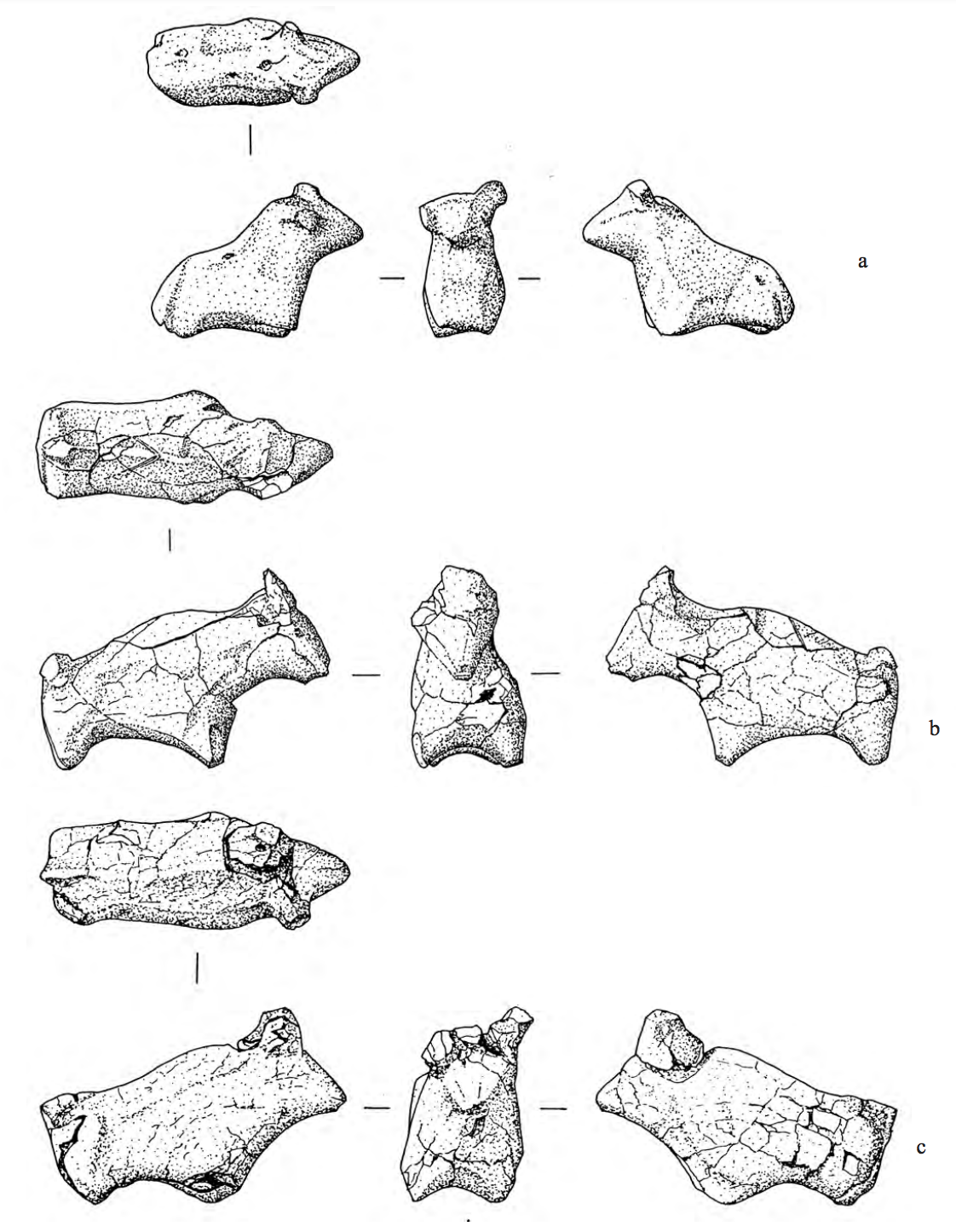
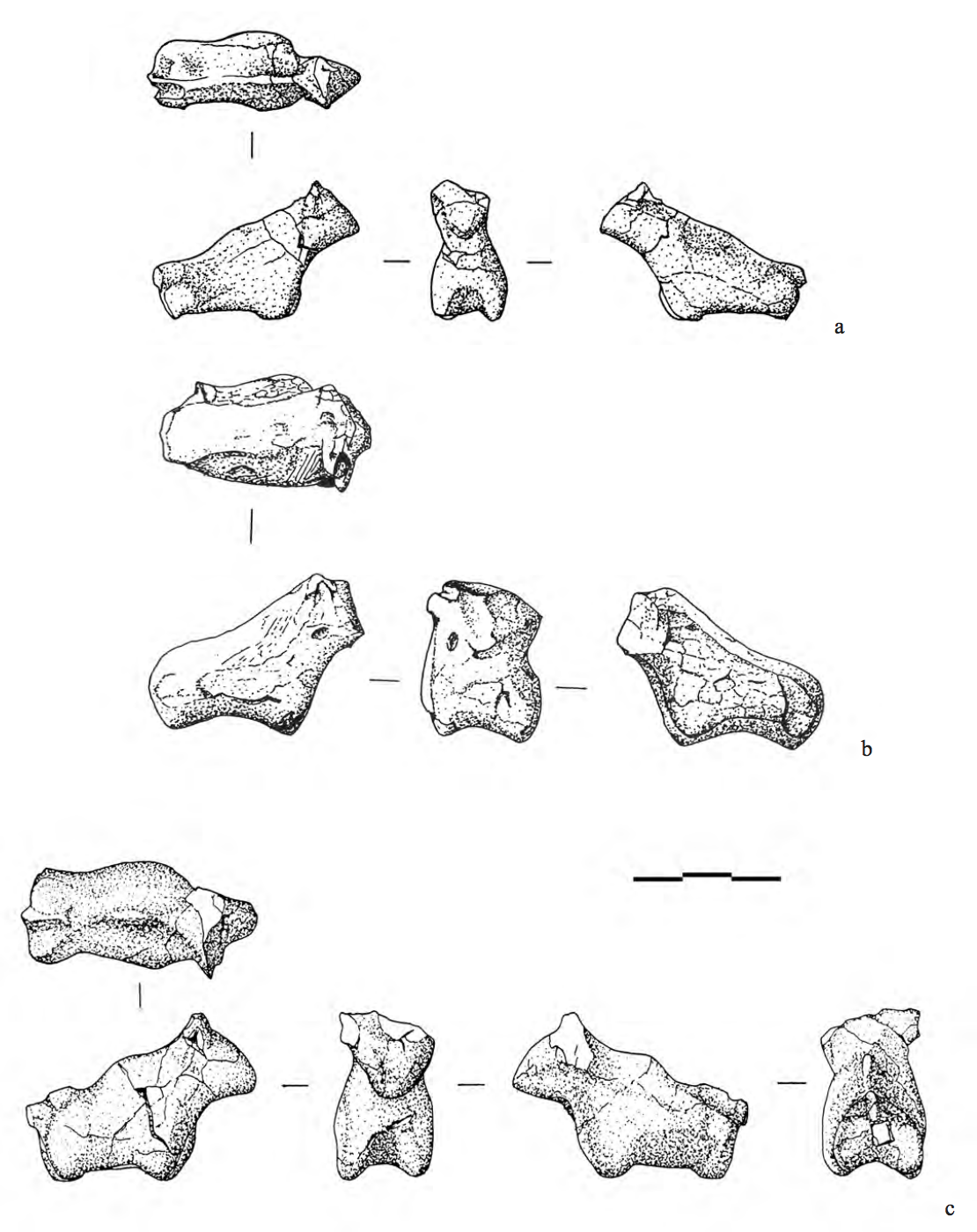
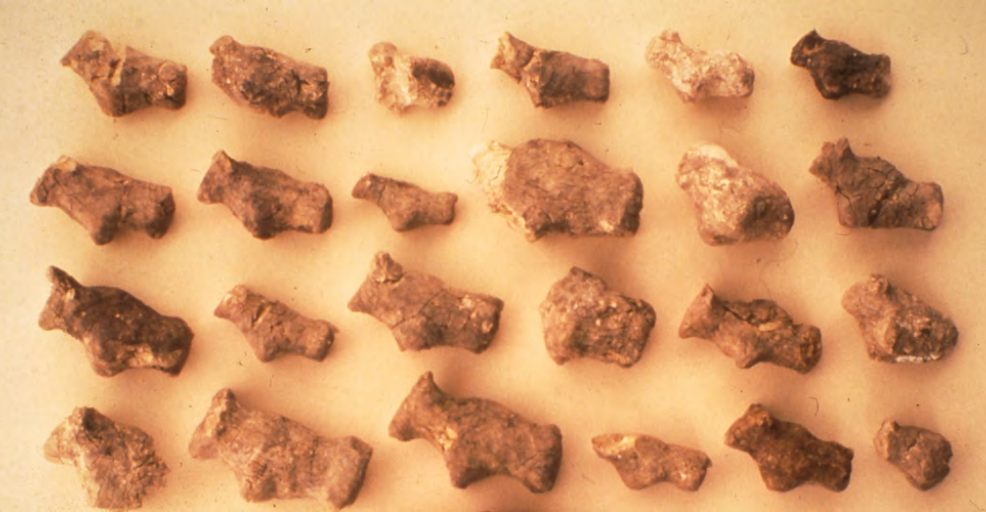
Page last updated: 1/19/20